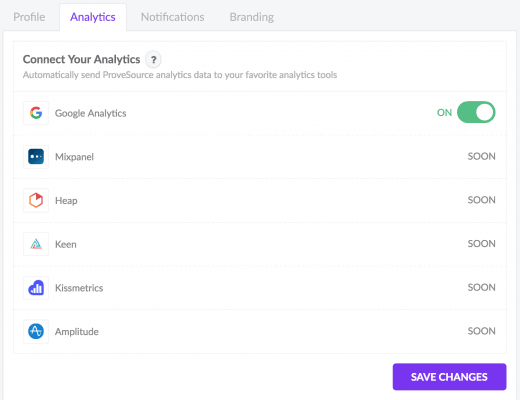Just look around and you’ll see hundreds of successful startups that run without an “office.” These companies have built “remote” into their DNA and have learned the art of overcoming the virtual distances (across distance, time, and cultures) that come with such work setups.
If you, too, aspire to build a remote startup team for the long haul like these, then you need to think beyond things like the communication and collaboration tools you’ll need or the remote working onboarding checklists you could use. Because these just take care of the logistics of remote working. And while they’re essential, they don’t entirely set your remote team up for long-term success. You need to do more.
So let’s see three ways you can engineer your remote startup team so that it’s always productive, engaged, and happy.
Here goes.
#1: Create a Remote Working Policy
When you set out to build (or scale) a remote team, the first thing you’ll need is a remote working policy.
A clear and easily understandable remote working policy (that your remote workforce consents to) helps everybody. As an employer, you can list out “everything” that’s there to work remotely with you — right from the security measures you expect your employees to follow (like using VPNs) to the availability you expect from your employees.
Your employees, too, get to set clear expectations of what they’re signing in for. They’ll know if they can work remotely but need to follow the same schedule or if they need a designated workspace and so on.
A remote work policy might look deceptively simple, but it’s an excellent resource to help candidates decide if they can commit to what’s needed and if they’re cut out for remote work. Besides, failing to formalize all these remote work things can result in anything from data leaks and communication barriers to some big time loss of productivity, none of which you’d want to happen in your case!
Now, as you can imagine, a thorough remote working policy lists out every single thing your remote employees must comply with to work remotely for you. However, it must pay special focus on the availability clause. Your remote working policy must clearly specify how you’d like your employees to check in or out of their work days. If you need your employees’ hours to overlap a bit or need them to be available on certain days for certain periods (say, for meetings), clearly list those out.
If you’re going to use any time-tracking software, then you’d want to specify that as well in your remote working policy.
In addition to these, your remote working policy would also mention the expected Security, Code of Conduct, and Confidentiality clauses that your employees need to follow.
Putting together a good remote work policy IS a lot of work… but luckily, you don’t have to write one from scratch. Here’s a handy remote working policy template that you can adapt as per your needs.
Image source
#2: Help Your People Cope With the Challenges of Remote Working
Remote working is great for both companies and employees — but not without its challenges. From serious issues like feeling lonely, distracted, and unmotivated to the routine struggles of finding a reliable internet connection and a distraction-free spot, remote work can take a toll on your employees.
“Unplugging after work” too can be a challenge for remote workers. In fact, this challenge topped the list of challenges in Buffer’s State of Remote Report this year.
Image source
As an employer, you should help your employees beat these challenges in whatever capacity you can.
Arranging help (for e.g., therapy appointments) that boost your employees’ mental health, supporting co-working so they can beat loneliness, encouraging healthy work habits, and actually incentivizing breaks (like we do at Convert.com) are great ways to support your remote employees in overcoming these challenges.
#3: Invest in the Remote Working Culture
Remote work allows startups to save a lot of money that typically goes in maintaining an office infrastructure. But while these costs don’t exist for remote companies, building a productive remote workforce still needs investment.
And no, this isn’t the investment that you make in the form of generous remote working perks or allowances.
Instead, it’s the one you make to ensure that people who work remotely for you feel connected to each other (despite the physical distances) and engaged.
There are quite a few ways to go about this. For example, to build a sense of camaraderie, quite a few remote startups take the team out for retreats. Below, you can see a picture from our recent company retreat where we flew everyone to Bali for ten days.
Other than arranging such retreats, encouraging your employees to get to know each other more and bond about all things work and non-work can also go a long way here. For instance, at Convert.com, we’ve a system of buddy calls where Converters connect with each other and nurture their working relationships (and often end up becoming friends too!).
For the latter part, i.e., to ensure that your employees are engaged when working remotely with you, you can set up surveys. Surveying your remote employees will show you how involved they feel working for you and toward your organizational goals. This is critical because disengagement is a serious productivity killer. Here are twenty very effective survey questions that can correctly gauge your remote employees’ engagement levels. They’re based on the top drivers of employee engagement as determined by Culture Amp.
Image source
Wrapping it up…
At Convert.com, we’re a 100% remote company with people across ten different time zones, and we can tell you this: It takes a lot more than hiring the right people and setting up the right systems, processes, and tools to make remote work work for you.
Above everything else, you need to be prepared to invest in your people. Not just in ways that make them more productive or competent on the work front, but also in those that help them meet their personal goals.
So tell us: How do you approach remote working at your startup? And what are your most pressing challenges when it comes to doing so?







